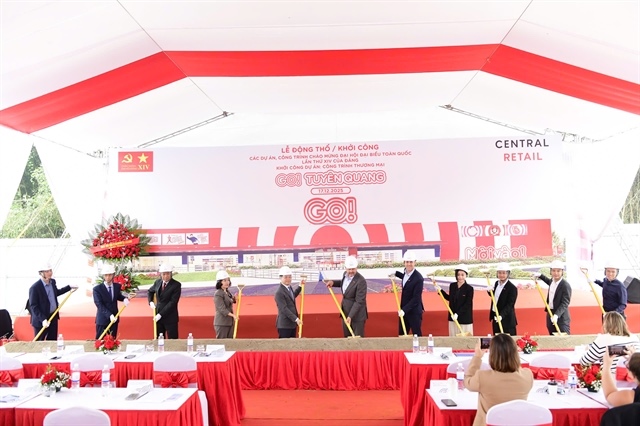VN handicrafts need unique features, better designs to grow exports
VN handicrafts need unique features, better designs to grow exports
Although the fine art and handicraft industry has great potential to grow, poor quality design and low competitiveness are hindering the industry, said Deputy Minister of Industry and Trade Tran Quoc Khanh on Tuesday.

He spoke at a seminar organised by the Ministry of Industry and Trade’s Trade Promotion Agency (Vietrade) and the Korea International Cooperation Agency (KOICA). The Ha Noi event was titled “The enhancement of Vietnamese handicraft industry.”
Khanh said that the handicraft industry plays an important role in the country’s export growth, which fuels the economy as a whole.
In addition, the sector represented the backbone of craft villages in rural areas, which create job opportunities and raise incomes for local workers, he said. The industry can also help reduce the income gap between urban and rural areas.
The expansion of wholesale and retail trade activities, export activities, the e-commerce system and product promotion are needed to boost the development of the sector, he added.
According to Khanh, however, one of the most notable weaknesses in the handicraft sector is the lack of creativity in Vietnamese designs and the shortage of professionally trained designers.
According to the Viet Nam Handicrafts Association (Vietcraft), around 90 per cent of Vietnamese handicraft products are made to suit the technical designs of importers and are not made under Vietnamese labels.
The handicraft items of Viet Nam have yet to create a unique footprint or specialise in specific markets because Vietnamese handicraft manufacturers mainly produce low-cost products in bulk for large retailers. Due to their dependence on foreign companies, Vietnamese handicraft markers only make modest profits.
Co-operation on the design
In a move to help improve the country’s handicraft sector, Vietrade has partnered with KOICA to implement a scheme that shares the seminar’s title: “The enhancement of Vietnamese handicraft industry”.
Notably, within the framework of the scheme, the two sides will co-ordinate to set up a centre called Viet Nam-Korea Design Cooperation Centre, focusing on activities to improve the design capability of Vietnamese businesses and the connectivity between domestic and foreign designers.
The signing ceremony for the Memorandum of Understanding on co-operation was held during the seminar.
Under the scheme, the two sides will also promote an e-commerce channel supporting the consumption and export of Vietnamese handicraft products to foreign countries, especially the South Korean market.
At the seminar, delegates introduced the roadmap and detailed plans for the scheme, providing information to help businesses realise the importance of product design and the development of an e-commerce platform to enhance the value of the handicraft sector in Viet Nam.
According to Ta Hoang Linh, Deputy General Director of Vietrade, Vietnamese enterprises are facing new challenges and opportunities, requiring Vietrade to continuously innovate to meet the needs of enterprises.
He added that enterprises themselves are focused on design and branding in order to participate in global value chain.
The scheme is expected to improve the design and export capacity of handicraft enterprises in particular and the Vietnamese business community in general and boost Vietnamese exports, Linh said.




















